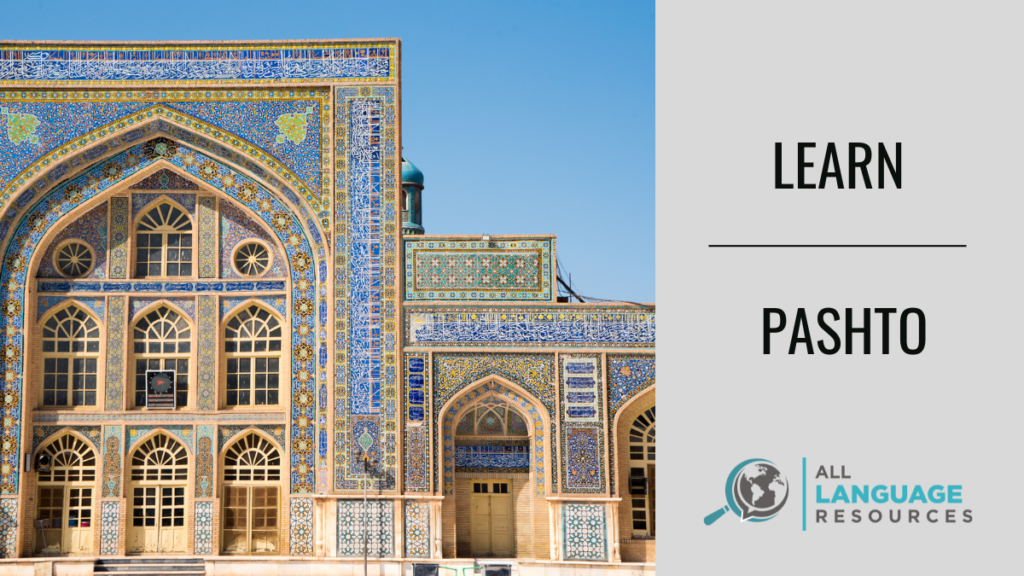West of the Indus River in Pakistan and south of the river Amu Darya in Afghanistan, the ancestral homeland of the Pashtun people awaits you.
The ancient origins of the Pashtuns are unclear, but their cultural identity is strong. Pashtuns live by the Pashtunwali, a rigorous and ancient code of honor that is over a millennium old, far predating the formation of the modern states of Pakistan and Afghanistan where most Pashtuns live.
With roughly sixty tribes and over 400 sub-clans, the Pashtuns have a rich and diverse culture that is best expressed through their own language: Pashto.
- About the Pashto Language
- How to Learn Pashto: Hacking the Language for English Speakers
- Is Pashto Hard to Learn?
- What's the Best Way to Learn Pashto?
- What's the Easiest Way to Learn Pashto?
- How Long Does it Take to Learn Pashto?
- How to Learn Pashto Fast
- Your Plan for Learning Pashto
- Additional Pashto Learning Resources
- Pashto Media Resources
Learn Pashto grammar, script, resources, learning tips, and answers to language learning FAQs. Discover effective strategies for learning Pashto today!
About the Pashto Language
Pashto is an Indo-Iranian language. It’s closely related to Farsi, Kurdish, and Balochi, among other languages.
Pashto is native to both Pakistan and Afghanistan. There are smaller groups of Pashto speakers in Tajikistan, as well as Iran.
You might hear the Pashto language referred to as Pukhto, Pakhto, Pashtu, and Pushto. In Persian literature, it’s sometimes called “Afghani.”
The Pashto language is divided into three standards or dialect groups.
The language’s “soft” dialects, which retain the age-old /zh/ and /sh/ sounds, are known collectively as Southern Pashto—and spoken by about six million people in Afghanistan.

Conversely, the Northern dialects are sometimes called either Paxto or Pakhto. These dialects are sometimes called the “hard” dialects since they use the /gh/ and /kh/ sounds in place of the older /zh/ and /sh/ sounds. Northern Pashto counts about 9.6 million speakers in Pakistan.
Northern and Southern Pashto are the two primary standards. There’s also a set of Central Pashto dialects, Bannuchi, Waziri, and Dzadrani, which are spoken along the Afghanistan-Pakistan border.
Some sources put the total number of native Pashto speakers in modern-day Afghanistan and Pakistan as high 18.5 million.
The Pashtun diaspora has brought between 40 to 60 million Pashto speakers to the shores of many countries all over the world — such as India, the United States, the United Arab Emirates, the United Kingdom, Iran, Germany, Japan, Australia, and Russia.
Pashto in Afghanistan
The disparity between the number of Pashtuns in Afghanistan and the attitudes toward their language is a delicate subject.
Pashto is a regional language in Afghanistan, and one of the country’s two official languages. The country’s other official language is Dari (Eastern Persian) — which many of its speakers still prefer to call Farsi, or Fārsī-ye Darī. Afghan Pashto, which shares some vocabulary with Persian, is a literary language with a rich written tradition of poetry.
Varying numbers of Pashto speakers in Afghanistan are reported. Some sources say the number is as low as 18% of the population; others claim that it’s as high as 48%. (It’s unclear whether these numbers represent just native speakers, or some speakers who use Pashto as an auxiliary language.)
Ethnic Pashtuns make up the single largest Afghan ethnic group, accounting for about 42% of the Afghan population. Traditionally, they have also held much of the country’s political power.
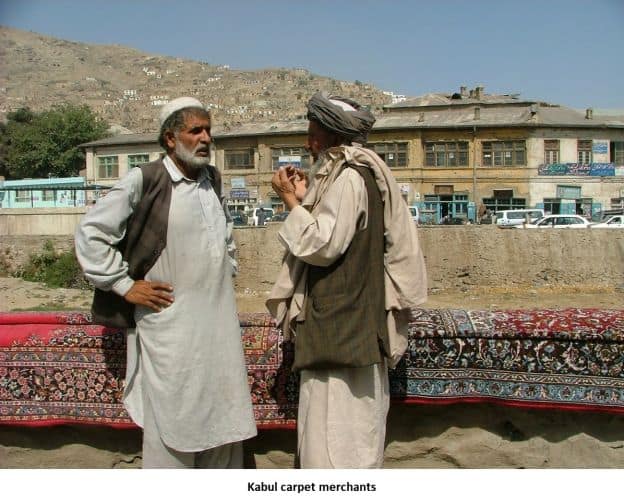
Despite all of this, Fārsī-ye Darī holds linguistic sway in Afghanistan. About 80% of the country’s communications, from print and electronic media to official government directives and records, are in Fārsī-ye Darī. It’s largely the language of government and of higher education.
Indeed, many Pashtuns are bilingual in Fārsī-ye Darī, which also serves as a common language between several of the country’s ethnic groups. The Pashto language is less likely than Fārsī-ye Darī to be spoken as an auxiliary language by those outside of the Pashtun ethnic group.
Pashto in Pakistan
Pashto is not an official language in Pakistan.
Roughly 15-20% of the Pakistani population speaks Pashto as their native tongue. Like Punjabi, Balochi, and Sindhi, Pashto is recognized by the Pakistani government as a regional language.

Most of Pakistan’s Pashto speakers live in the northern part of Balochistan province and in the northwestern province of Khyber Pakhtunkhwa, which sits above Balochistan on the Pakistan-Afghanistan border. (A particularly famous Pashtun and Pashto speaker, Nobel prize winner ملاله یوسفزۍ (Malala Yousafzai), is a native of Khyber Pakhtunkhwa’s scenic Swat Valley.)
The language is also spoken in Karachi, Lahore, and Islamabad, among other Pakistani cities and towns.
Pashto is the second most-spoken language in the country, with about half as many speakers as the majority language, Punjabi.
However, Urdu and English are the two official languages of Pakistan. Pakistani Pashto borrows some words from Urdu.
Pashto in Pakistan tends to be more of a spoken language, rather than a literary one. Because it is not given state support to promote its use, many speakers do not learn to read and write it in school.
How to Learn Pashto: Hacking the Language for English Speakers
If you’re an English speaker trying to learn Pashto, you might initially feel a bit overwhelmed by how different it is to English.
However, even languages as different from each other as English and Pashto do have some similarities. By keeping these similarities in mind as you study, you can give yourself a few shortcuts to learning Pashto.
Similarly, we’ll touch on a few of the differences that can make learning Pashto a challenge for English speakers. Being aware of these challenges can give you a bit of a head start in understanding Pashto and help you better plan your studies.
After our sneak preview of a few Pashto basics, we’ll talk about how you can optimize your learning time and create the support and structure you need to successfully learn Pashto.
Easier Aspects for English Speakers
Although Pashto and English are like fifth cousins twice removed on the Indo-European language tree, there are still a few “family resemblances,” which might make Pashto a little easier for English speakers to learn.

Adjectives Before Nouns
Like English, adjectives in Pashto go before the nouns they modify. When you describe people or things in Pashto, you can put a descriptive word in the same place you would in English — right in front of the noun.
Loanwords
Even if you can’t read them yet, you’ll doubtlessly recognize some English loanwords when you hear them. For example, پنسل is “pencil” and ډکشنري is “dictionary.”
Both are pronounced quite similarly to their English counterparts. In these examples, though, the stress is on the second syllable in Pashto — the opposite to the stress used in English.
Compound Words
Like English, Pashto has compound words. So, once you learn the word for book, کتاب, you’ll recognize it in کتابچه (notebook or booklet).
Similarly, خوړنځی (restaurant) derives from the Pashto words خوړل (to eat) and ځای (place)…a “place to eat.”
As you progress in your studies, you might start to see simpler Pashto words forming compound words.Use what you already know to help you decode new vocabulary.

Challenges for English Speakers
Let’s look at some of the possible stumbling blocks you may face on your journey to master Pashto.
A Different Writing System
Pashto is written and read right-to-left.
The Pashto alphabet incorporates a Perso-Arabic script that’s very similar to the ones used by Farsi (Western Persian), Fārsī-ye Darī (Eastern Persian), Kurdish, Tajik, and Balochi. So, if you’ve already studied any of those, you may have an easier time with Pashto.
Pashto has its own numeric script, based on the Arabic-Indic numerals. Some of them may remind you of the Arabic numerals we use in English and other Indo-European languages.
Contextual Letter Forms
Pashto letters change when they are connected to one another — generally, much more than Latin letters might when written in a cursive script.
For example: If you were to write the word for “notebook” in Pashto, leaving a space between each letter, it would look like something this:
ک ت ا ب چ ه
However, if it were written properly, with no spaces in between the letters, it would look like this:
کتابچه
Notice how several letters change as they are joined together, some of them contorting to connect to neighboring letters.
Once you’ve gotten a firm grip on the isolated forms of the Pashto letters, take a look at this Pashto alphabet table, which shows the three contextual forms — initial, medial, and final — for each letter.
Pashto Grammar
Pashto grammar will not be a cinch English speakers. Here are some of the main concerns you might have.
Different Word Order
Pashto sentences don’t follow the same word order as English.
In English, we use a subject-verb-object (SVO) word order. In the sentence, “You learn Pashto,” the word “you” is the subject, “learn” is the verb, and “Pashto” is the object.
Pashto uses a subject-object-verb (SOV) word order. So, if you were to reconstruct the example sentence, using Pashto word order with English words, it would read, “You Pashto learn.”
Dropping the Subject
In English, we often use the same verb conjugation for the subjects I, you, we, and they. So, we almost always need to specify who’s doing an action.
Pashto verbs conjugations tend to be more varied than English. Because the verb changes reflect their subjects so well, it’s quite acceptable in Pashto to drop the subject of a verb.
Grammatical Gender and Declension
Pashto incorporates two grammatical genders: masculine and feminine. Like English, it has both singular and plural forms of words.
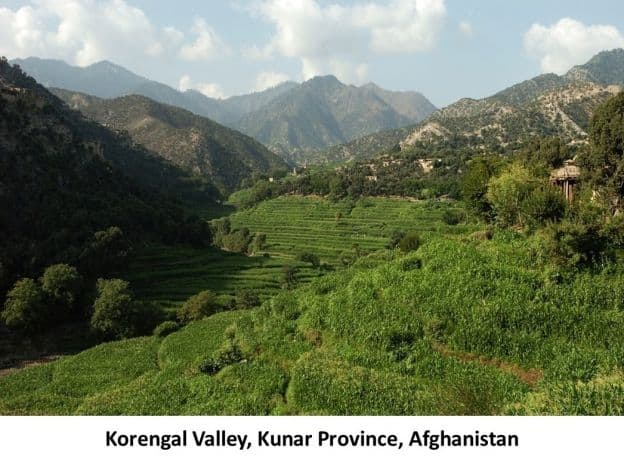
Nouns and adjectives in Pashto use declension, or form changes, to signify gender, number, and case. These changes are made so that words “agree” with one another in gender and number. For example, if the noun is masculine and plural, any adjectives describing it must be in their masculine and plural forms also.
Words can take on other changes in Pashto, based on their position and function in a given context.
Tricky Pronunciations
Native English speakers may have some difficulty distinguishing similar sounds in Pashto. What seem like nearly identical sounds to anglophone ears can signify very different word meanings in Pashto.
Pronunciation of consonants can be a problem. Pashto often combines more consonants into a single syllable than English would.
Like English, and many other languages, Pashto uses word stress, communicating different meanings by accentuating certain syllables of a word. And, just like English, the stress is generally not written.
However, if you happen to see a phonetic transliteration of a Pashto word, you’re in luck — the word stress is often marked with an acute accent. For example, the word اوږه (shoulder) is rendered in the Latin alphabet as úẓ̌a, with the stress on the first syllable (ú-ẓ̌a).
Is Pashto Hard to Learn?
English and Pashto are very different languages, making it relatively difficult to learn. Not only does Pashto have its own alphabet (Perso-Arabic) that learners have to be able to read and write, but its grammar system has many idiosyncrasies that don’t exist in English – the nouns that can be combined with certain verbs depends on the tense of the verb, while nouns can have prepositions, postposition and ambipositions (units that can surround nouns).
What’s the Best Way to Learn Pashto?
Pashto is a lesser taught language, so the best to learn is by enrolling in a formal Pashto language course, either online or at a local institution. This provides structured learning with a curriculum designed to cover various aspects of the language, while providing you with access to resources more readily than you might find online. Some universities offer online courses, while YouTube also has a range of video lessons available for you to follow.
What’s the Easiest Way to Learn Pashto?
There’s no one-size-fits-all approach when it comes to making language learning easier, as individual learning preferences and goals differ. However, the process might be made easy by:
1. Focusing on Common Phrases: Start by learning common phrases and expressions used in everyday conversations. This can help you quickly communicate in basic situations.
2. Immersing Yourself in Content: Immerse yourself in Pashto content such as movies, music, and videos. Exposure to authentic materials helps with understanding pronunciation and cultural nuances.
3. Learning the Alphabet: Familiarize yourself with the Pashto script. While it may seem challenging at first, understanding the script will significantly enhance your ability to read Pashto without becoming reliant on Latin alphabet transcriptions.
4. Consistently Practicing: Consistency is key to learning a language as difficult as Pashto. Dedicate a set amount of time each day to practice Pashto, whether it’s through apps, reading, or speaking with native speakers.
How Long Does it Take to Learn Pashto?
It’s difficult to get a clear answer to this question, with the internet being full of stories of people who lived in Pashto speaking communities for years and not being able to learn it, as well as natives who can speak the language but cannot read and write it due to its complexity. However, the US Foreign Service Institute estimates that it takes around 1100 hours of study be considered generally proficient in Pashto. If you learn full time (8 hours per day, 5 days per week) you would be proficient in 28 weeks.
How to Learn Pashto Fast
Learning any language quickly requires a focused and immersive approach. Surround yourself with Pashto as much as possible. Listen to Pashto music, watch Pashto movies or TV shows, and try to find opportunities for real-life conversations with other Pashto speakers. With this in mind, you might consider hiring a Pashto tutor for personalized lessons. A tutor can provide targeted guidance and address your specific learning needs.
Alternatively, you might explore immersive language learning programs that simulate real-life scenarios. These programs often use technology to create an environment where you need to use Pashto to navigate daily tasks.
Your Plan for Learning Pashto
There are several things you can do to make your Pashto study time more efficient, more effective, and more enjoyable.

Know What You Need to Learn
Before you try memorizing a Pashto textbook or signing up for a twelve-week intensive Pashto immersion course, ask yourself a few questions about your goals.
Motivation
Why do you want to learn Pashto? Is it for work? For recreational travel? For social reasons?
Usage and Focus
How will you use the Pashto you learn? For written correspondence? Chatting with acquaintances over the phone? Securing lodging and meals while traveling? Or do you aspire to become a Pashto translator or interpreter?
If you’re using it for travel, you might only need to learn a few key words and phrases to get around. Of course, the more you learn, the more deeply you will experience the culture and the better you will be able to relate to the people you meet.
Other uses for Pashto will require more thorough, dedicated study. Your goals for learning Pashto will help you figure out where to focus your efforts and what level of fluency you would need to meet your goals.
Dialect Group
Do you want to learn one of the Southern Pashto dialects of Afghanistan or a Northern dialect spoken in Pakistan?
Even though these are essentially all the same Pashto language, there are also a lot of differences in pronunciation between the different dialect groups. Switching repeatedly between one dialect group and the other could stymie your learning efforts, especially as a beginner.
Again, your planned use for the language—where and with whom you’d like to speak Pashto—will help you find your direction.

Decide How You Will Learn
Once you have the answers to these questions, figure out your time frame. Then you can realistically plan how to achieve your desired fluency, given how much study time you have.
Maybe you can only fit in a couple of hours of study on the weekends. How can you make that time really count?
Regular Practice
Pashto will take many months — possibly, many years — to learn well. It will not happen overnight.
You must be patient with yourself as you learn. Learning any language can be demanding, and Pashto is not the easiest language for an English speaker to learn.
Give yourself time to learn and absorb the language. Commit to consistent study, which helps you grow your knowledge slowly and powerfully.
You don’t want to overwhelm yourself. You want to build, little by little.
Pace yourself, but maintain your momentum. One small achievement will get you primed for more challenges and more learning. Celebrate your victories. Keep a language journal and write down what you’re learning as you go along.
If you keep your learning commitment and study steadily, you’ll be amazed by all that you can learn in a relatively short time.
Perfecting Pashto Writing
If you’re serious about learning to write in Pashto, consider practicing writing it longhand. Learn to write the isolated letters in the alphabet, then move on to writing Pashto words.
Studies have shown that writing in longhand has distinct benefits for engaging the brain. It stimulates memory and learning. Like writing in cursive, writing in Pashto script requires concentration and eye-hand coordination.
Writing by hand strengthens your grasp and memory of the new script you’re trying to learn in a way that typing cannot. When you’re typing, your fingers strike any key using the same basic action. Your brain doesn’t make the complex associations it would to produce each particular stroke of a handwritten letter, or to connect letters together in a script.

To practice writing Pashto’s Perso-Arabic script by hand, jot down new Pashto vocabulary in a journal. Use a small whiteboard to write the same words, over and over, like Bart Simpson doing his chalkboard penance in his 4th-grade classroom. Not only will writing in Pashto become easier and more natural to you, you’ll also get a chance to reinforce your memory of individual words.
As you write out new words, try using the four Pashto diacritics (accent marks), which serve as helpful pronunciation reminders for students. You won’t see these in normal Pashto text, but they can be invaluable when you’re learning pronunciations.
Pashto Pronunciation
To learn correct pronunciation, expose yourself to as much Pashto speech as possible. We’ll look at some authentic sources for Pashto audio — like radio, music, podcasts, and television.
Listening is the foundation for good pronunciation. After all, how can you speak Pashto well if you don’t know what it’s supposed to sound like?
Once you have confidently learned some basic conversational phrases, you can start to engage in conversation. We’ll look at a few ways you can find Pashto conversation partners, or maybe even a one-on-one tutor to improve your listening comprehension and speaking skills.
Additional Pashto Learning Resources
In addition to language courses and learning apps, supplementary Pashto learning resources — such as dictionaries, typing tools, flashcards, and blogs — can enrich your language-learning experience.
Lists of Pashto Resources
You can find one of the more extensive lists of Pashto language resources on The Afghanistan Analyst website. It features various types of resources, including textbooks, dictionaries, television, radio, and university language programs. (As of this writing, it had last been updated in May 2017.)
The Lexilogos site also hosts a page with a list of Pashto language resources, such as dictionaries, essays, online lessons, and a few antique grammar textbooks.
Online Pashto Dictionaries and Dictionary Apps
Rely on a good Pashto dictionary to help you understand and learn new words. Many of these are free, so you might try a few to see which you like best.
Android users might enjoy the Pashto Dictionary app developed by Maihan Nijat. This app is customizable, allows you to keep a list of favorites, and has an integrated conversation feature for sending definitions to friends.
This English Pashto Dictionary app for Android can help you find word meanings while you’re out and about. It gives English meanings for Pashto words, and vice versa. The app includes automated pronunciations, a study plan, a word game, auto-suggestions for words, and an offline mode. Some users reported that a few of the definitions were incorrect; others felt that the word bank was limited in scope. Even so, most users seemed satisfied with this dictionary app.
iOS users can try this English Pashto Dictionary app, by a different developer. This iOS app has similar features to the Android app of the same name.
The Pashto Dictionary Pro app for your iPhone or iPad is another option. It allows user contributions, so you can add words and definitions to help other learners.
Qamosona.com is home to Pashto dictionaries providing translations for a multitude of languages — including Chinese, English, German, Japanese, Indonesian, French, Spanish, Swedish, Russian, and even Latin. Learners with an Android device can also enjoy the matching Qamosona app.
Part of a non-profit project, thePashto.com offers an online Pashto-English dictionary, as well as both an Android and iOS dictionary app.
Typing in Pashto
To type in Pashto, you’ll need a special keyboard. You can access a few Pashto keyboards online through your web browser, or use a Pashto keyboard app for your favorite mobile device.
Try several different keyboards to find the ones you like best. The more comfortable you feel with the keyboard interface, the more likely you’ll practice writing texts and emails in Pashto.
Web-based Pashto keyboards:
- Pashto Keyboard Online from TypingKeyboards.com
- Pashto Keyboard from Branah.com
- Online Pashto Keyboard from TypingBaba.com
- Pashto Phonetic Keyboard on thePashto.com
- Multilingual Keyboard: Pashto (beta) on Lexilogos.com
Various virtual Pashto keyboards are available for both Android users and those with iOS devices. Some of them incorporate emojis for the full texting experience. Many of them are free.
Blogs and Websites for Pashto Learners
Blogs are a casual way to learn about everything from common Pashto expressions to core cultural customs. They’ll bring flavor and nuance to your language learning.
The Pashto Language Blog from Transparent Language explores numerous topics, such as polite words and phrases, vocabulary words, verb conjugation, and learning to read Pashto script. It also delves into Pashtun culture, particularly in Afghanistan. While you’re visiting the blog, check out the Pashto Word of the Day, complete with audio and an example sentence.

While no longer active, the Learn Pashto Language blog is an archive of dozens of articles. Learn Pashto words for computer and internet terms, ponder Pashto proverbs, and enjoy poetry. Bear in mind, though, that some of the links in this blog may have expired.
Intermediate and advanced learners may enjoy Pashto Zeray, a website providing access to spoken Pashto poetry, music, radio, television, and the Christian Bible in Pashto, in audio and written form. You can look at the site in either English or Pashto.
In addition to blogs, there are websites devoted to the study of the Pashto language. Advanced learners in particular might appreciate the efforts of the Pashto Academy. Based at Peshawar University in Pakistan, the Academy undertakes scholarly study of the Pashto language, and works to promote the study and use of the language. (Their site is viewable in both Pashto and English.)
The Pashto Academy publishes a Pashto language journal, appropriately called Pashto. It comes out twice a year, and is Pashto-English bilingual.
Pashto Media Resources
When you’re learning any language, it’s a good idea to round out your studies with other kinds of media besides courses and apps.
By incorporating media such as books, news, radio, and television into your routine, you will learn more about Pashto as it’s used every day by native speakers.
Your Pashto vocabulary will broaden and become more nuanced. You will grow to understand more about Pashtun culture.
Perhaps equally as important, your interest in learning the language will be regularly stimulated — especially if you focus on topics that you enjoy.
Pashto Books
For a light-hearted approach to learning the Pashto alphabet, try My First Pashto Alphabets. It’s illustrated, with an example for each Pashto letter. Contrasting colors highlight the letter being taught.
Textbooks
Dr. Rahmon Inomkhojayev, from Indiana University, has written a series of Pashto textbooks based upon the Afghan standard of Pashto. There’s an elementary-level textbook in two volumes, followed by an intermediate textbook. (Inomkhojayev’s elementary-level textbook is the required text for the Online Pashto Course hosted by the Center for Languages of the Central Asian Region at Indiana University, Bloomington.)

A reprint of an older text, Introduction to Pushtu: An Official Language of Afghanistan by Qazi Rahimullah Khan, gets mixed reviews. As it was originally published in the 1930s, some learners feel that a lot of the language and examples are outdated. However, it can still provide a fairly solid — albeit somewhat stilted — introduction to the language. Logical-mathematical learners, who prefer to learn in a structured manner, might appreciate the systematic approach this volume takes.
Bilingual Books
Bilingual books are a great choice, especially for beginning and intermediate Pashto learners. The Hoopoe Teaching-Stories series, largely based on traditional tales and authored by Idries Shah, can ease you into reading Pashto while entertaining you with folk stories such as The Lion Who Saw Himself in the Water, The Stranger’s Farewell, and The Boy Without a Name.
Pashto Readers
The Pashto Reader, published by the Center for Applied Linguistics in 1992, may be read online via the Internet Archive, or downloaded as a free PDF or ebook in the Kindle, ePub, DAISY, or plain text formats. Intermediate learners may find this reader a particularly helpful and convenient resource, as it includes vocabulary lists, tips on language usage, historical and cultural information, and analytical notes for detailed reading. There are also jokes and poetry, which were primarily sourced in Pakistan. All of these features will assist learners in reading Pashto more thoroughly, as well as getting a better grasp on the Pashto language and Pashtun culture in both Afghanistan and Pakistan.
Books of Pashto Poetry, Short Stories, and Novels
Pashto Stories presents Old and New Testament stories from a Pashto perspective. There are downloadable audio and video versions accompanying the texts. In addition, you can download PDF versions of short books, such as A Treasury of Knowledge and Daily Strength.
For intermediate and advanced learners, Bookmaza presents free PDFs of scanned Pashto books. (Many of these appear to be older, public-domain-type texts.)

Additional Pashto novels, poetry, and short stories can be found on Pukhto.net. Like the texts on Bookmaza, these can also be read online or downloaded as PDFs.
Advanced learners may appreciate the opportunity to learn other subjects through Pashto, using these Pashto school textbooks from the Afghan Ministry of Education.
Pashto News Online
The BBC hosts a Pashto news page, with information about events in both Pakistan and Afghanistan, as well as international news.
The Daily Wahdat is based in Peshawar, Pakistan. It appears to be Pakistan’s primary written news source in Pashto.
There are a few Pashto-language news publications in Afghanistan; most of them also have an English version, which can be helpful for learners:
- Independent News Agencies
- Afghan Government News Source
Khyber News TV, branded as “the only Pashto news and current affairs TV channel in Pakistan,” is a good choice for intermediate Pakistani Pashto learners. In addition to its YouTube channel, it presents video and written content in both an English version and a Pashto version on its website.
Pashto Music and Radio
Streaming Pashto radio stations are limited in number. There are a few, though. Some broadcast news exclusively; others are dedicated to Pashto music.
Radio Free Afghanistan has a news site on which you can stream current broadcasts live — just look for the “speaker” icon at the top of the site. You can also read articles and watch news videos. In addition, the site hosts a few podcasts.
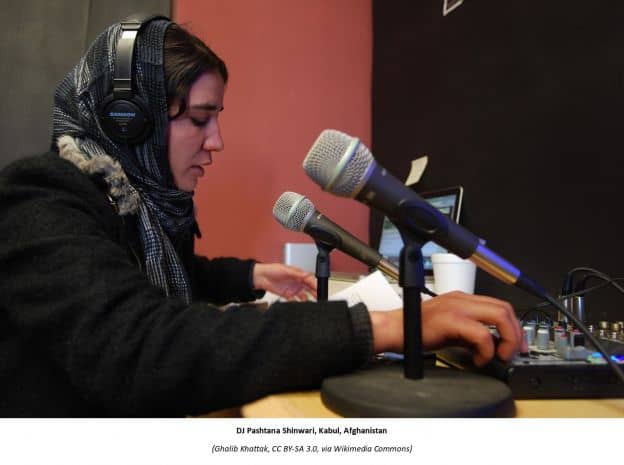
Voice of America broadcasting has a similar setup to the Radio Free Afghanistan site.
Pashto Radio, a music station based in Toronto, Canada, is streamable through TuneIn.com. (Recently, an update to the Google Chrome web browser made it incompatible with TuneIn, but you can still listen on TuneIn’s “pop-out player” on Chrome — or you can use the Firefox or Microsoft Edge browsers.)
A few different archives of Pashto music reside on Soundcloud, including Surspeen’s Best Music Best Pashto Tapy, Waya Waya Pashto – PTI Songs, and salman buledi baloch. These are largely Electronica and dance.
Spotify has a small selection of Pashto music, including a playlist of about 100 songs from Pakistan. These songs are largely adult contemporary, with a combination of traditional and electronic instruments accompanying the vocals.
Pandora hosts Pashto radio and music, including Zakir Hussain’s Pashto Radio. The search for “Pashto” can be a little fuzzy, though, resulting in hits that have nothing to do with Pashto language or culture.
You can find hundreds of Pashto songs on YouTube, in a variety of styles.
Patari claims to have the “biggest collection of Pakistani audio.” Some of this is in Pashto; it includes both music and podcasts. You’ll need to create an account to sign in and explore the collection.
Pashto Television and Movies
When it comes to finding Pashto films and TV programs on streaming channels, you might need to go beyond more mainstream options like Netflix, Hulu, and Amazon Prime. While all three of these services — Netflix in particular — are known for carrying some international programming, Pashto learners may be disappointed by the lack of Pashto fare. In addition, searches for “Pashto” and “Pashtun” shows on these platforms can be misleading. Often, such searches will yield a list of programs with English, Arabic, Urdu, or Hindi language options — but little, if any, Pashto.
Similarly, Sling, AT&T/DirecTV, and DISH Network, all of which have a plethora of international television packages, aren’t offering Pashto packages at this time.
Roku, a popular streaming device with hundreds of channels you can add, comes through with multiple possibilities for Pashto learners:
- Northbay TV caters to an Afghani audience, with content in Pashto, Dari, and Farsi
- Almahdi TV hosts religious programming in Pashto
- Afghan TV Procast may have some Pashto programming
- PakistanTV likely has local programming, possibly with some in Pashto
As with many international channels on Roku, additional monthly fees may apply for each channel you add. That said, the fees are usually in the neighborhood of a dollar per month, per channel. So, depending on your Pashto level and your learning goals, you may find such channels a worthwhile investment.
Ariana Afghanistan International Television can be streamed live online. Some content will be in Dari or Farsi, but some is in Pashto.
Darya is a movie and television channel featuring programming in Pashto, as well as Farsi and Dari. There’s content from Afghanistan, Korea, Turkey, India, and other countries. These shows include cartoons for kids, sports, documentaries, music and talent shows like Afghan Star (similar to Pop Idol or America’s Got Talent), and news broadcasts. You can watch Darya on both Roku and Amazon Fire TV devices.
The Afghan Live TV website is a streaming gateway for various Afghani channels. There are a few television channels and radio stations with Pashto programming, normally mixed with shows in other languages. You may run into streaming restrictions for certain channels, based on your location.
Pashto Movies: Welcome to Pollywood
Pollywood has been used to refer to Pashto films that are from Pakistan — specifically, from the province of Khyber Pakhtunkhwa, where Pashto is most spoken in that country. Confusingly, “Pollywood” can also mean Punjabi cinema, as you might discover when searching for that term on Amazon or other video sources.
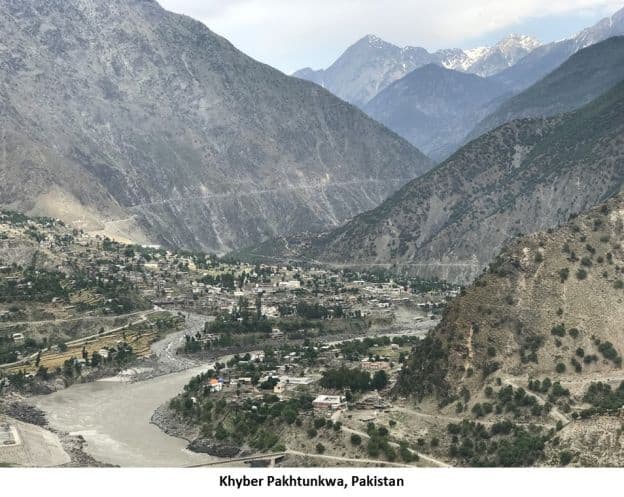
Afghanistan has its own Pashto cinema, which — largely due to changes in the country’s political climate — has grown considerably since 2001.
At this time, it can be hard to find Pashto films outside of Afghanistan or Pakistan, although you may find a few films on YouTube channels like the aforementioned Pashto Beats.
As the Pashto saying goes, که غر لوړدی په سرلارلري (“Even if a mountain is very high, there is a path to the top.”). Keep climbing, take the road less traveled, and it can make all the difference in your quest to learn Pashto.

